Potato size for planting
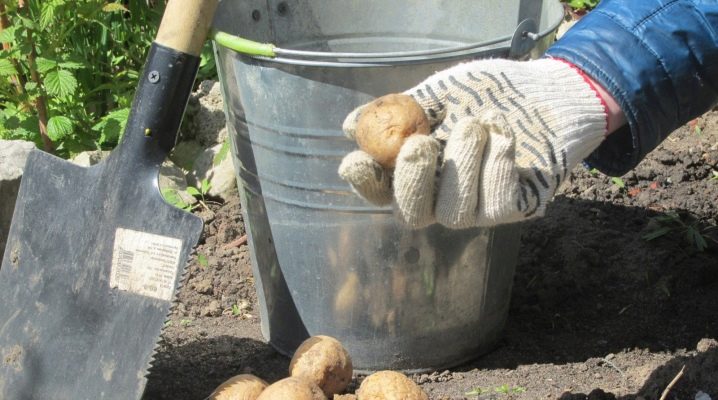
Careful selection of seed material is perhaps one of the most important conditions for obtaining a rich harvest. This applies to any vegetable crop, including potatoes. Perhaps, even people far from this topic can agree with this thesis. However, the issue of tuber size remains rather controversial and causes a lot of discussion and discussion.

Which is better: medium or small tubers?
Among other characteristics, potatoes have a caliber - this is the name of the cross-sectional diameter. Thus, when sorting, potatoes are divided into:
- small (less than 3 cm);
- medium (5-6 cm);
- large (exceeding 6 cm in transverse diameter).
Of course, this applies to varieties with round and oval tubers. If their shape is more elongated, then these numbers are reduced by 1 cm.
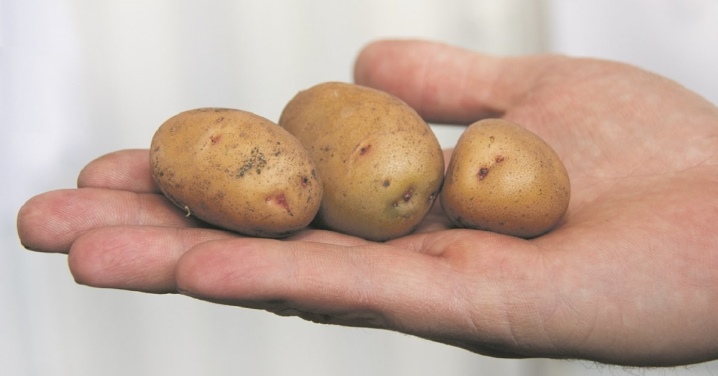
Usually, small tubers are selected as seed tubers, less often medium tubers. This is economically viable since the larger ones can go for food or for sale. Since sorting occurs mechanically in large farms, potatoes with a diameter of 3-4 cm are selected for seeds. Manual selection is more variable: here you can focus on the proportion of potatoes of a certain size from the total volume and, if small is not enough, pick it up from a larger part.
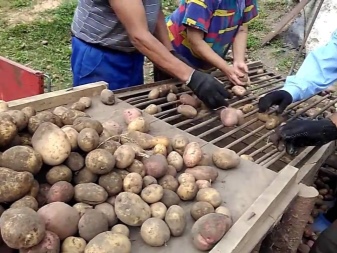

Correctly selected variety, fertile soil, adherence to planting technology, competent care, timely feeding, absence of diseases and pests - all this affects the result that will be visible at the end of the season. If all the conditions are met, even small potatoes will give a good harvest, so there is no point in using a larger one. However, in reality, not everything goes so smoothly, so most gardeners prefer medium-sized tubers. They produce more strong shoots that are resistant to weather conditions, attacks by pests, bacteria and viruses.
It is not for nothing that there is a popular wisdom that says that what the seed is, so is the tribe.
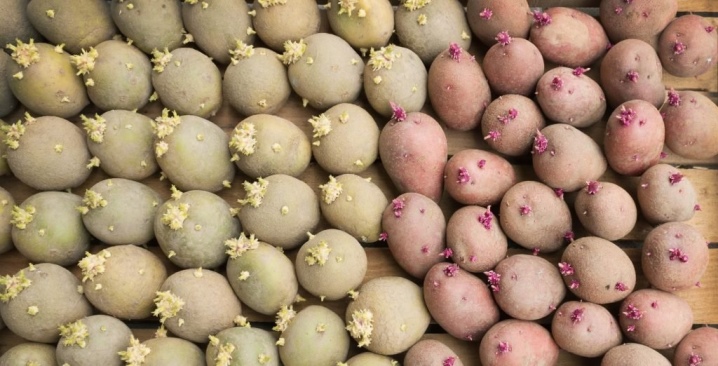
Is it possible to plant large potatoes and how to do it?
It is believed that small tubers do not feed the shoots well, so they will not produce good tops. And she, in turn, will not provide the required amount of starch and other substances for the formation of new tubers of a larger mass. However, you should not go to the other extreme and plant the largest potatoes in the hope of growing an unprecedented harvest.... Most often, bushes with good tops, but small tubers grow from such specimens.
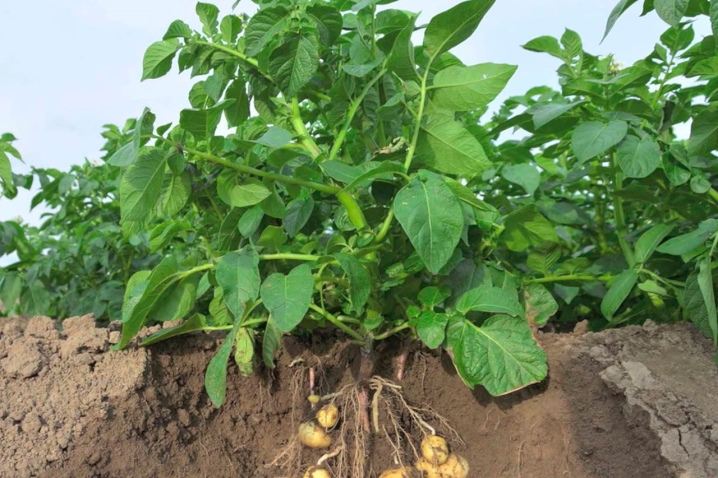
This is due to the fact that the maternal tuber provides sufficient nutrition, and its own root system does not develop well. Even if new tubers are tied, they will remain small. However, this can also happen as a result of changes in conditions: prolonged cold snap, rainy weather or drought, the application of a large amount of fertilizer, etc.
To achieve the desired yield, it is better to cut large tubers. Since the eyes with the kidneys are unevenly located, this issue must be approached thoughtfully.
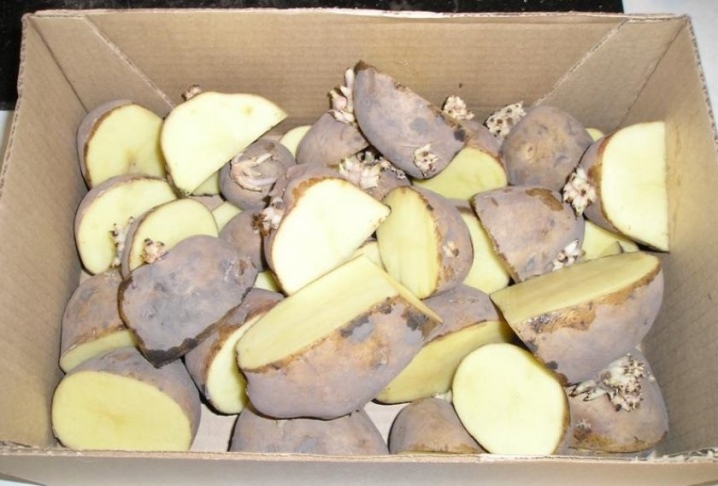
If there are few of them, it is better to cut the tuber lengthwise, since this will leave several lateral buds on each half and one or two of the most active ones from the top. If there are many eyes, you can cut it across, in the form of slices or segments of arbitrary shape. It is better to do all this at least two days before planting, in order to have time to process the sections with activated charcoal or ash, and then let them dry.

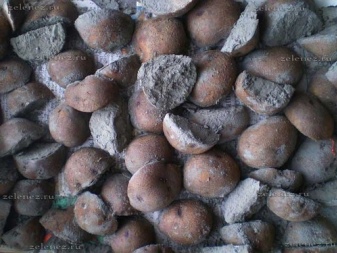
Size Tips
To choose seed potatoes, you can use the tips of experienced gardeners.
- The optimal size for planting are tubers with a diameter of about 5 cm and weighing from 50 to 80 g. To understand what to orientate on, if you do not have measuring instruments at hand, you can imagine a large egg: the tubers should be approximately the same size.
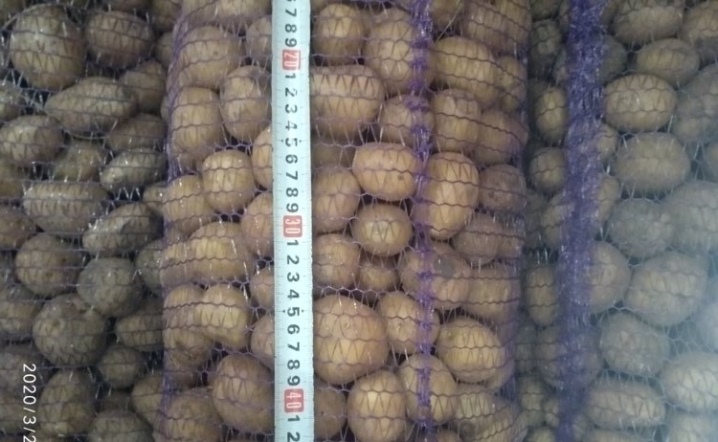
- Each of the tubers should have several eyes with live buds: they can be checked if in the spring the seeds are moved from the cellar to warmer conditions in advance. Weak, thin sprouts or their absence, spots, damage are a reason to discard potatoes and not take up space in the garden for nothing.
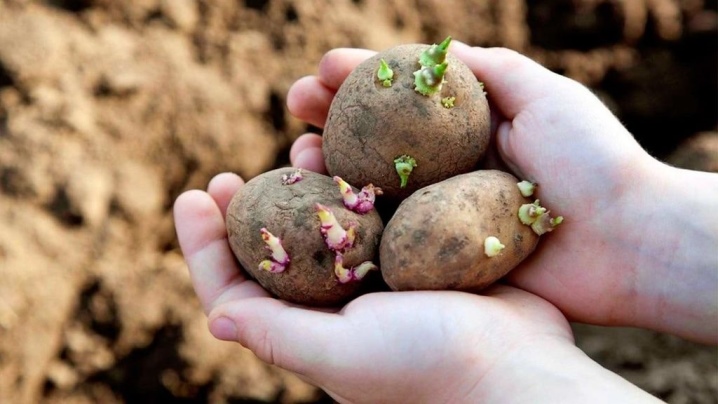
- To be sure of the quality of the roots, it is better to select seed potatoes directly at the time of harvest. It is collected only from good roots with even, large tubers. If such were found, all potatoes from the bush, even small ones, can be sent to the seed fund. Exceptions can only be very large specimens weighing 500 g and above. Purchased potatoes may contain tubers from weak or diseased roots and cannot be verified.
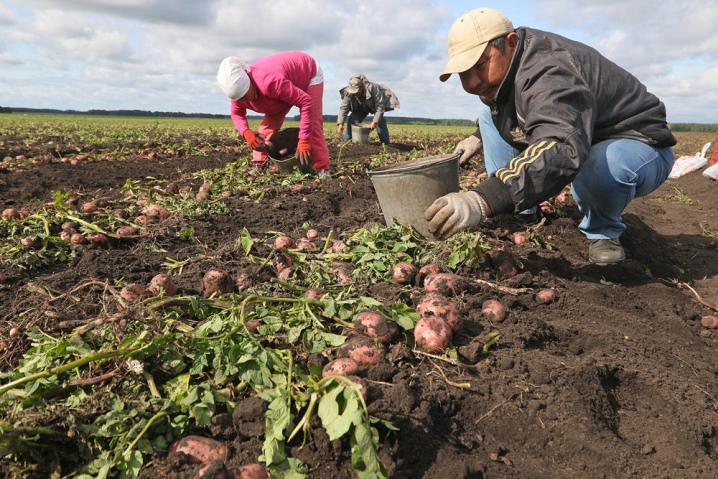
As a last resort, you can use potatoes of any size.
Very small tubers can be placed in pairs in the hole... The main thing is that they look healthy and have sprouts. Of course, no one will give a guarantee of a good result in this case, especially if the variety has already degenerated. Large ones, in turn, can be divided into slices or only eyes can be used: this will allow not only to get a decent harvest, but also to increase the seed fund.
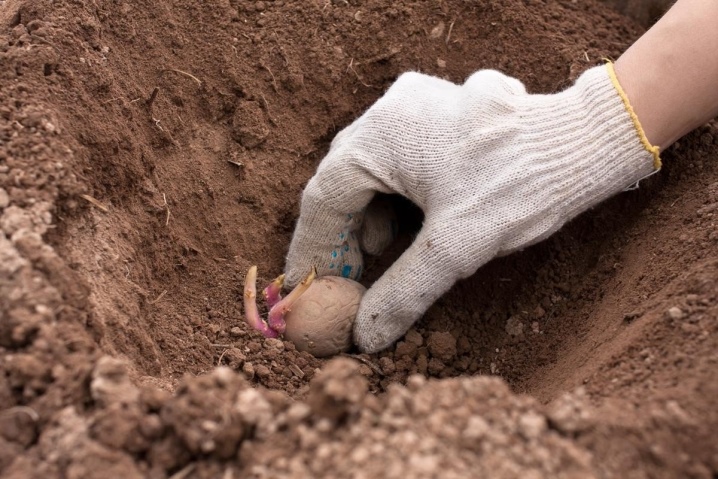













It is not the first year that I have been planting just eyes with a small cut of a tuber (except for whole medium potatoes). The harvest is always no worse than from whole tubers! From which I concluded that the tuber itself is not needed by the sprout, and its size is not important - if only the sprouts were good. Already starting in February, when my potatoes are either running out or sprouting, I cut off the slightly sprouted strong eyes with a small piece of tuber when peeling the potatoes, put the cut down on a damp paper napkin and close them in small plastic containers (from under cakes, cookies, etc.) .NS.). I keep them in the dark in a warm garage at the entrance gate. By the time of planting, short, strong shoots have grown, sometimes even with many roots.
The comment was sent successfully.